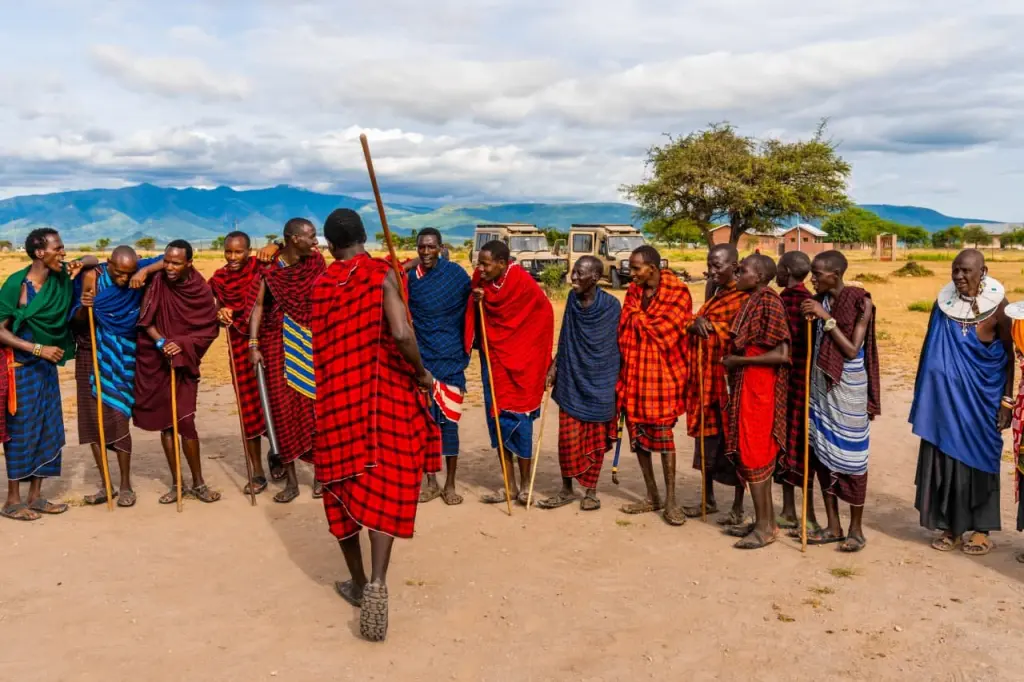The Modern Maasai: A Glimpse into Their Culture

The Modern Maasai: A Glimpse into Their Culture
When one thinks of “modern African tribes,” vivid images often come to mind: slender, dark-skinned men in vibrant red plaids leaping gracefully into the air, bald women adorned in colorful beads, and ochre-dyed hair. These visuals are frequently associated with the Maasai, a well-known tribe of nomadic warriors who have maintained their ancestral way of life in the face of modern civilization.
Who Are the Maasai?
Upon arriving in Tanzania, you might encounter locals dressed in traditional attire, welcoming visitors with smiles. In urban areas like Arusha or the beaches of Zanzibar, you may see individuals in red and blue plaids, eager to pose for photos in exchange for a small tip. However, these individuals may not represent the true essence of the Maasai warrior; they are more akin to performers catering to tourists.
Local markets brim with Maasai-inspired souvenirs such as beads and wooden crafts, while the colorful “shuka” scarves are easily found. The Maasai culture is a significant part of East Africa’s identity, particularly in Tanzania and Kenya, where they inhabit the remote inner lands.
Understanding the Maasai
Documentaries and travel shows often depict the Maasai as nomadic herders living in temporary settlements amid the African savanna, eschewing city life and modern conveniences. They are characterized by their distinctive red plaid garments, tall and lean physiques, and unique jumping rituals.
Despite these portrayals, the reality is complex. Modern Maasai people strive to preserve their traditions, relying on cattle herding, and often lack formal education. They live in simple huts and practice customs such as polygamy and circumcision. While some of these narratives are exaggerated, there remains a core of truth in the Maasai’s commitment to their heritage.
The Maasai Language and Demographics
The term “Maasai” translates to “one who speaks the Maa language,” which is shared among various sub-groups within the tribe. While many Maasai are fluent in English and Swahili—especially those near urban centers—their identity is deeply rooted in their language and traditions.
The Maasai are one of approximately 3,000 tribes in Africa, living in proximity to national parks across Maasailand, which spans parts of Kenya and Tanzania. The exact population of the Maasai is challenging to ascertain due to their migratory lifestyle. Estimates suggest that there are around two million Maasai in Tanzania, although census data is often unreliable.
Daily Life of the Maasai
Contrary to their fierce reputation, modern Maasai are generally peaceful. While all men eventually become warriors, this role is more symbolic than functional today. The Maasai continue to prioritize herding, with cattle and goats being central to their way of life.
Their settlements, or kraals, are designed for the protection of livestock, surrounded by thorny fences to deter predators. Huts are constructed from local materials, such as dung and soil, providing shelter from the elements.
Gender Roles and Community Structure
In Maasai society, men and women have defined roles. Men are primarily responsible for herding, while women handle household chores, including milking and maintaining the huts. The Maasai live in a patriarchal structure, with elders guiding community decisions and enforcing traditions.
Children are introduced to responsibilities early, learning to care for livestock and participate in community tasks. Initiation rituals, such as circumcision, mark the transition to adulthood, with significant cultural implications for both boys and girls.
Rituals and Traditions
The Maasai have a rich tapestry of customs, including the famous jumping dance known as the adumu, performed by young men during initiation ceremonies. This dance has become emblematic of the Maasai culture and is often showcased for tourists.
Beadwork is another significant aspect of Maasai identity, with men and women adorning themselves with intricate jewelry. Traditional clothing, particularly the shuka, has evolved over time, but remains a vital part of their cultural expression.
Diet and Food Practices
The Maasai diet primarily consists of milk and meat, with cow’s blood occasionally consumed for its nutritional value. While they traditionally avoided farming, some clans are beginning to incorporate agricultural practices into their diets, influenced by external factors.
Challenges and Changes
Despite their resilient culture, the Maasai face challenges from modernity. As their traditional lands shrink and external influences grow, some practices are fading. Yet, efforts are underway to educate communities about health and rights, particularly concerning issues like female circumcision.
Conclusion
The Maasai people embody a unique blend of tradition and adaptation. Their commitment to preserving their way of life amidst the pressures of modernization is both admirable and complex. As we observe their culture, we gain insights into humanity’s diverse past and the ongoing evolution of tribal societies.




